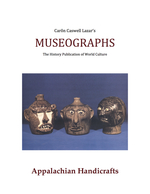Purchase the ebook for easy and immediate reading.
Purchase the print book for easy reading (3rd party vendor).
Purchase the audiobook for easy listening.
 High atop the Southern mountains lived the Appalachian settlers. They were people unconcerned with convention who lived removed from the throes of civilization for more than a century. From mighty blacksmiths to prized basket-makers, their crafts were well suited to a remote existence, giving them ‘the tools to tame the wilderness.’
High atop the Southern mountains lived the Appalachian settlers. They were people unconcerned with convention who lived removed from the throes of civilization for more than a century. From mighty blacksmiths to prized basket-makers, their crafts were well suited to a remote existence, giving them ‘the tools to tame the wilderness.’We have been providing authors and small presses with ebook publishing and book marketing services since 2010. We offer ebook publishing (creation, formatting, distribution), print on demand services, audiobook creation, editing/proofreading, book/author websites, and book marketing and promotion services. Please let us know how we can help you!